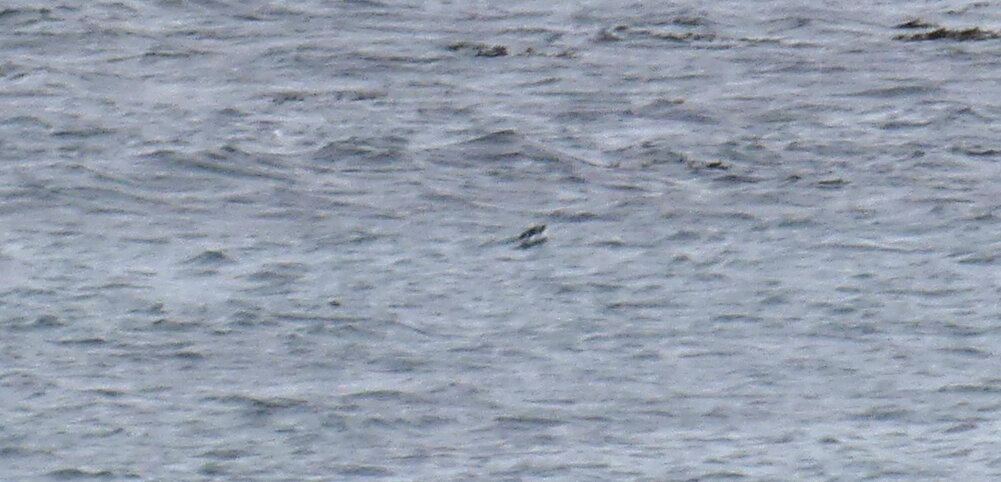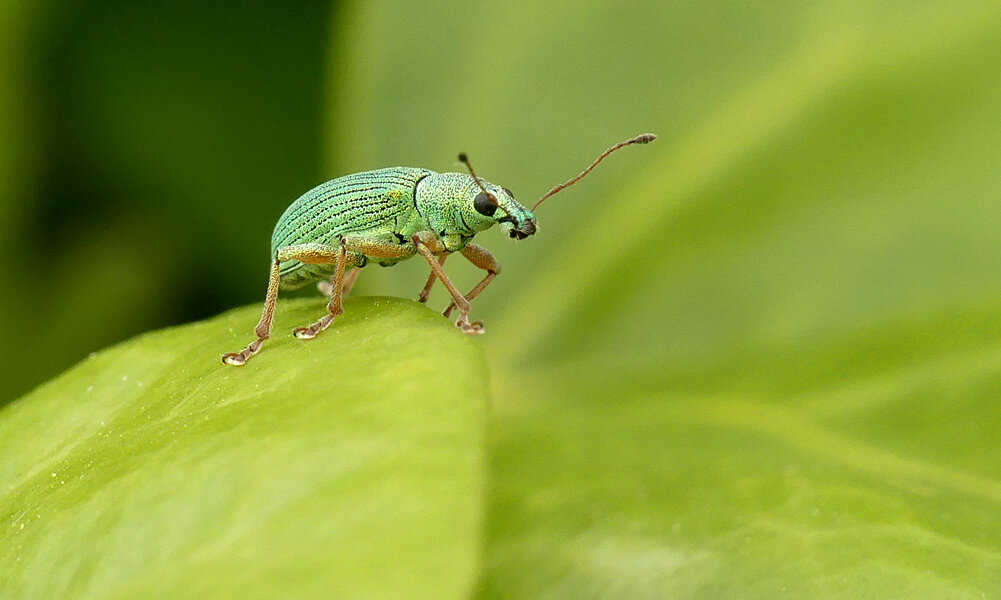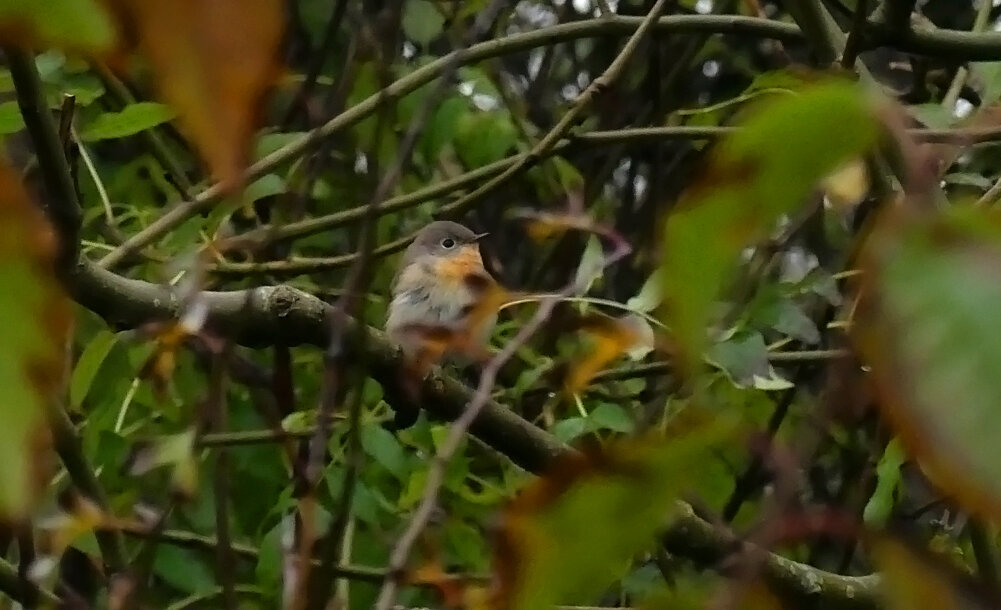January 2020
/The first week of the year generally sees a little spike in my birding activity and it started with a nice little twitch. Early afternoon on 2nd January there was a grapevine for a Little Auk at the Shingle Bank. I thought I would wait until it was confirmed since it might turn out to be just another auk sp. But then I thought sod it I’ll go anyway since I’m not doing anything. Halfway there the confirmation did come that it was a definite Little Auk, so I was pleased that I hadn’t delayed at all. When I arrived at the bank I was directed to a tiny bobber drifting out with the now falling tide. It was definitely a scope job and I saw the Little Auk really well albeit it was seemingly going further and further out.
Although not technically a Guernsey tick, it could be honestly classed as one, since the only previous Little Auk I had seen here had just been released after being looked after overnight, way back in 2001. I don’t know why I counted that bird ‘cos I shouldn’t have really done! I also remember seeing a dead bird in Jamie’s hand in 2006. But this was the first truly twitchable Little Auk in Guernsey since I have been here. It’s such a rare bird this far south, especially since 15 out of the 22 Guernsey records have been found dead or dying.
I was especially pleased that I’d bit the bullet and drove straight there since it continued to drift and drift, until it suddenly disappeared from view and was never seen again. Quite a few birders arrived not too long after me and dipped out. (A couple of people searching for the bird a while later saw a GBB Gull with a black-and-white object in its beak….). As you can see below, the bird was too far away for decent pics, but you can see better photos from Andy here and Wayne here from when it was much closer in. Whilst standing on the bank we had the Whooper Swan still present on the Aerodrome, a noisy Whimbrel flying around and I had a brief Water Pipit along the water’s edge.
Little Auk - L’Eree, 2 Jan 20 - it is there, honest!
Little Auk - L’Eree, 2 Jan 20 - definitely identifiable
Two days later on 4th January, with the weather pretty fine, I had a potter round the patch to get the new patch-year-list underway. There wasn’t very much unusual, the highlight being a Great Northern Diver at Cobo, and the Grey Wagtail and Black Redstart both doing the decent thing and sticking at Pulias until 2020. As it was coming to high tide I decided to drive to Belle Greve Bay to search for the Royal Tern as it had been seen there a couple of times in the week. On my way there a message came through to say that it was indeed there and roosting on rocks with the Oystercatchers - that was handy. However, less than 10 minutes later, I was scanning those Oycs and there was no royalty to be seen! A little unfortunate but there was another Great Northern Diver in the bay.
I was going to wander back thinking that I had just missed it, when it suddenly flew back in and landed on the rocks giving great views. The fourth year running that I had seen Royal Tern - not too shabby. There’s little else to add about this bird after so many sightings except to say that it still looks damn fine.
Royal Tern - Belle Greve Bay, 4 Jan 20
Royal Tern - Belle Greve Bay, 4 Jan 20
The next day, 5th January, Wayne, Mark and myself took the Trident out to Herm for the morning. It’s always worth checking the island mid-winter just in case something is hanging around there in the peaceful, undisturbed surroundings. We didn’t see anything especially surprising and we noted how few land birds we saw, which mirrors the situation we currently have in Guernsey - one of the worst winters for land birds we can remember. We only had a single Meadow Pipit on the whole common. We did see a couple of divers - a Great Northern near the harbour and a Black-throated off the northern tip. We also saw the Royal Tern again hanging around the islets off the west coast with a few Sandwich Terns. It was in more or less the same spot the last time we saw it in Herm. It is so irregular in Guernsey that we’re pretty sure it spends most of its time here, and I don’t blame it. Despite the few birds we had a great morning. From the boat we saw two Kittiwakes in the Little Russell.
Royal Tern - Herm, 5 Jan 20
Royal Tern - Herm, 5 Jan 20 - its favoured roosting spot on Herm - the distant rocks directly behind it are the ones I saw it on the day before!
Herm Common, 5 Jan 20
Wayne on Shell Beach, Herm, 5 Jan 20
and Mark from the same spot, but looking south, Herm, 5 Jan 20
the terrestrial lichen Squamarina cartilagina, Herm Common, 5 Jan 20
Over the first few days of the month, what was presumably the same wandering Glossy Ibis had been visiting Vale Pond each day towards dusk. I intended to pop up there one evening but never got round to it. On 5th January I had to go out to the garden shed for something and as I left the house noticed it was very late afternoon and the light had started to go. I thought to myself that if the ibis was possibly feeding at the Track Marais in the day (an ideal undisturbed spot for it) then it would maybe have to fly over my house in the evenings to get to the Vale Pond. As I was pondering this, standing on my back doorstep, I glanced up to my left only to see a bloney Glossy Ibis flying pretty low over the Arsenal building on its way north to the pond! As a birder you are constantly making predictions and imagining what you might be just about to see - and these almost never come true.
This was a superb bird to get on the house list and my first garden tick for well over a year. Then two days later I immediately got another! As I was getting into my car to go to work, the light was just beginning to come through and a Woodcock belted across the sky in a northeasterly direction. Not a massive surprise that they are in the area as there is some wet wooded areas to the east of SSHSchool but I was really chuffed to see one.
The rest of the month was pretty poor for birds with a redhead Red-breasted Merganser in Baie des Pecqueries the main notable sighting - and I didn’t even find it.
Black Redstart - Pulias, 24 Jan 20
Black Redstart - Pulias, 24 Jan 20
Baie des Pecqueries, 20 Jan 20
Reuben the Rat on eviction day! After spending over a month living in the garden shed, plopping everywhere and chewing holes in the wooden sides, I finally managed to catch this little tinker after feeding it dog food for weeks! Rather a brute, I hope he/she likes it at the rubbish tip.





































